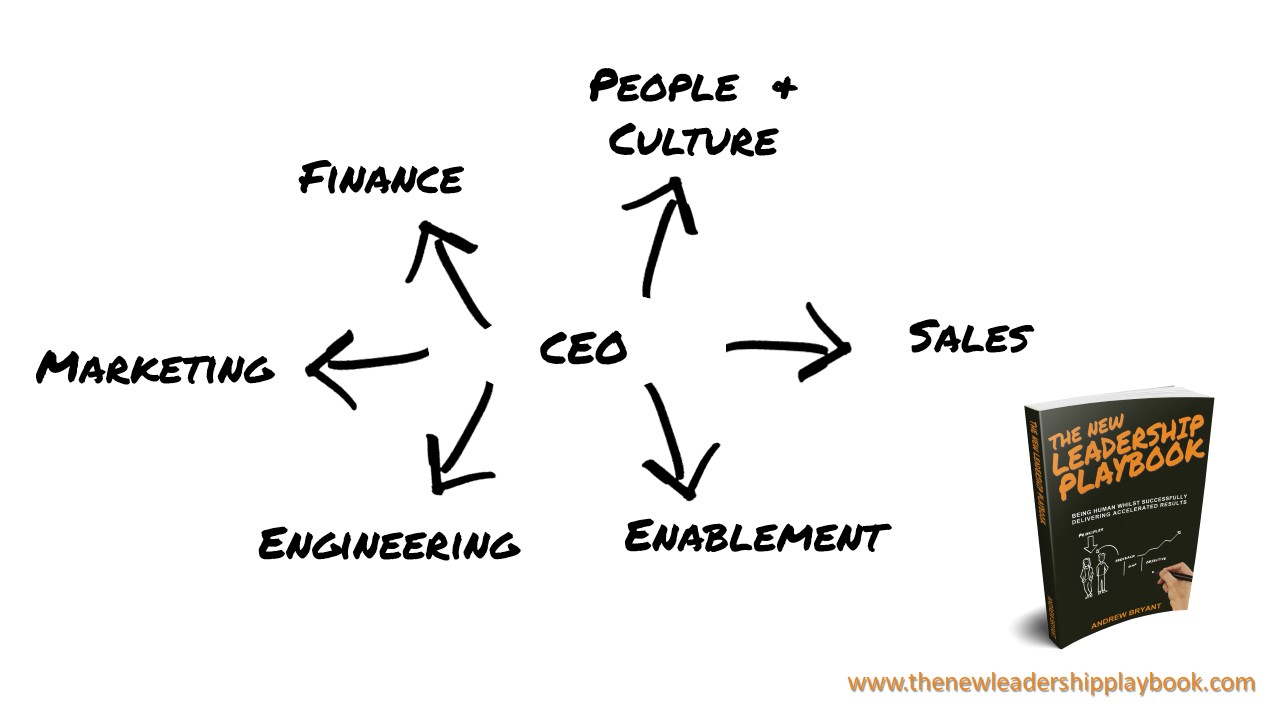Executive Leadership Teams - Exploring the Good, Bad, and the Ugly
Jun 07, 2023
The Executive Leadership Team (ELT) typically consists of the most senior leaders of a company, often with a CXOs title such as CEO, COO, CFO, CPO, CTO, and CRO. When the ELT works as One Team, the positive impact on culture and performance can be phenomenal, unfortunately, the majority of ELTs aren't even a team, they are a workgroup at best.
The Myth of the Executive Leadership Team
Just because your call it a team doesn't make it a team. A team operates with mutual accountability. Team members work together towards a common goal, tasks are shared, and success depends on collective performance. In a team, leadership is often distributed, and communication is more collaborative.
A workgroup operates with individual accountability. Each member has their specific tasks, and the group's success is the sum of the individual efforts. There is less interdependence compared to a team, and the focus is more on departmental or vertical achievement than collective goals.
Most ELTs operate as a workgroup with each CXO vying for the CEO's attention and resources.
A Tale of Two ELTs
One of the most compelling examples of how an executive leadership team can improve a company is the transformation of Microsoft under CEO Satya Nadella. When he took over in 2014, Microsoft was struggling with declining PC sales, a failed attempt to enter the smartphone market, and an internal culture often described as combative and siloed.
Nadella made significant changes to the ELT and steered the company in a new strategic direction, focusing on cloud computing and AI. He also worked to shift the company culture to a "growth mindset," emphasizing learning, creativity, and collaboration.
Under Nadella's leadership, Microsoft has become a leading player in the cloud market, and its stock price has significantly increased. This success can be attributed not only to Nadella but to the effective ELT that he assembled and led.
On the other end of the spectrum, Uber's growth and public image suffered significantly due to the actions of its ELT under co-founder and former CEO Travis Kalanick. The company was frequently in the news for a series of scandals, including allegations of sexual harassment within the company, aggressive tactics against competitors, and more.
These problems were, in large part, attributed to a corporate culture that the leadership team allowed, where fast growth was prioritized over ethical considerations. This led to significant reputational damage, legal troubles, and ultimately, Kalanick's resignation.
Under new leadership, Uber has worked to repair its public image and reform its internal culture, but it still faces challenges related to the actions of its previous ELT.
Diagnosing a Bad ELT
The seniority of the ELT means that they often don't receive the scrutiny and feedback provided to other teams within an organization. Structurally, Human Resources can often be subservient to the ELT and so it would take the observation of an outside party, the board, or a courageous Chief People Officer to sound the alarm on the following symptoms:
-
Lack of Common Vision and Mission: If there isn't a clearly defined, shared vision and mission that binds the members together, the ELT will act like a workgroup, where each individual focuses on their own objectives.
-
Lack of Trust and Openness: For any team to work effectively, there needs to be a level of trust and openness that allows for honest communication, feedback, and collaboration. If these elements are missing, the ELT members will behave competitively, serving their own interests before the team.
-
A Culture of Conflict: The invertible consequence of the ELT behaving competitively is that conflict will arise between silos and individuals. It is impossible to build a unified culture within an organization when the most senior leaders are competing for power or operating in fear.
-
Talent Drain: The absence of a tangible culture and the presence of conflict within the organization will inevitably result in talented employees leaving the organization and difficulty in attracting the best new hires. A quick look at a company's Glass Door comments and rating will give an indication of this.
- Lost Opportunities: A company that is at war with itself will not have the agility to creatively seize new opportunities and will stagnate, and eventually become obsolete.
Confident Humility vs Ignorant Certainty
Leading a company is not easy, and being in the ELT requires balancing people, processes, and profits, in a volatile business and Global environment. The complexities make it impossible for anyone to know everything but there is an unrealistic expectation that members of the ELT should.
Perceived pressure to be perfect, a tendency to narcissism, or a hierarchical leadership structure has unfortunately generated many leaders who operate with Ignorant Certainty. Such leaders are certain that they are right, regardless of the fact that they are willfully or unconsciously ignorant of multiple factors. You know the type, the "My way or the highway" leader.
Ignorant Certainty from the CEO will inevitably prevent the formation of a collaborative ELT and may produce clones, who also rule their departments with similar ignorance. This is what constitutes an ugly leadership culture.
The humble leader is grounded, they know that they don't know everything but are confident that together with the right people they can solve problems and make the best of opportunities. This is what good leadership looks like.
In Conclusion
It is my professional pride that I have played some part in facilitating the development of Executive Leadership Teams on three continents, over the last 20 years. I wrote this post as I prepared to engage with a brand-new ELT headed by a confidently humble CEO, with whom I have worked before.
It is always a joy to get the opportunity to be part of building a leadership culture from the beginning, rather than being asked to coach a dysfunctional ELT.
If you would like to talk to me about working with your ELT or as a Keynote Speaker for your leadership conference, then feel free to contact me.
Get a FREE Chapter of The New Leadership Playbook
Stay connected with news and updates!
Join our mailing list to receive the latest news and updates from our team.
Don't worry, your information will not be shared.
We hate SPAM. We will never sell your information, for any reason.


